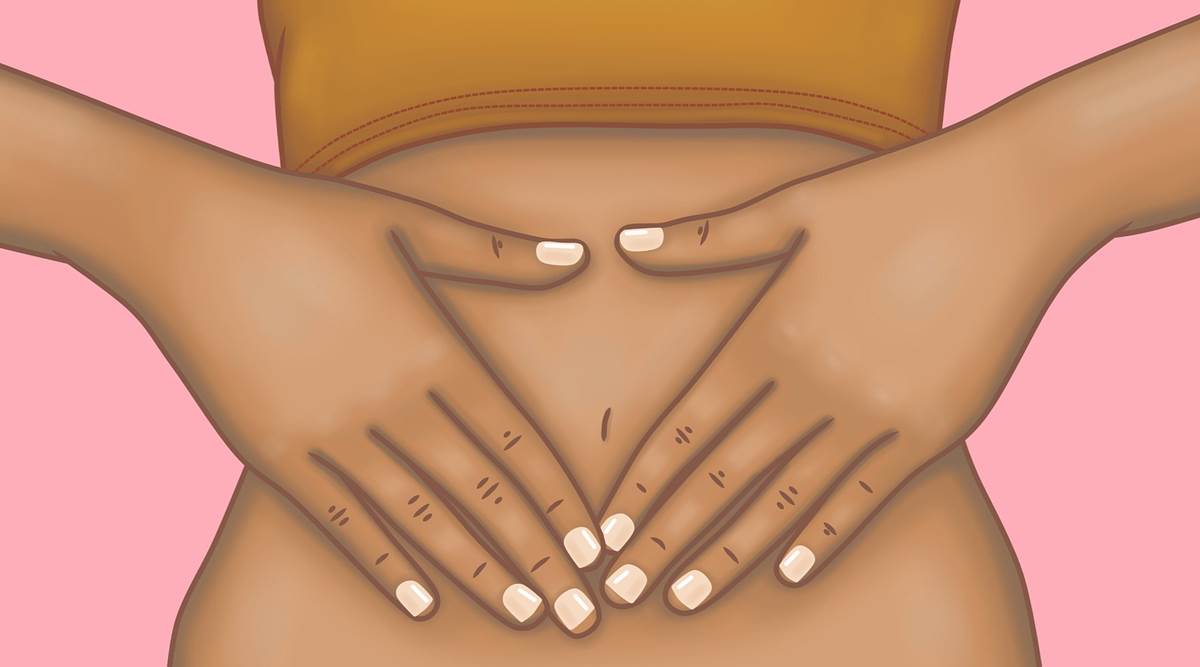 The pelvic floor laxity usually starts with the first pregnancy. This would be an ideal time to start the exercise. (Photo: Pixabay)
The pelvic floor laxity usually starts with the first pregnancy. This would be an ideal time to start the exercise. (Photo: Pixabay) Medically known as urinary incontinence (UI), urinary leak is one of the most ill understood of health problems, but one that many women suffer from.
What is a urinary leak?
Dr Rubina Shanawaz Z, senior consultant, obstetrics and uro gynaecology at Fortis La Femme Hospital, Benguluru, says that urine leak is not “just bedwetting”, but also “when you notice dripping of urine before you can reach the restroom, when you cough, lift heavy weights, play tennis or have intercourse. Simply put, it is the inability to control urine outflow”.
Why does it happen?
The doctor explains there could be many reasons for this, but it mostly happens from the weakness of the muscles which support the uterus and urinary bladder, known as the pelvic floor muscles.
“This is because of increased pressure on the pelvic floor, as a result of obesity, difficult vaginal delivery, post pregnancy — especially when there have been repeated pregnancies with short inter pregnancy intervals — incessant cough, or chronic constipation, apart from other neurological issues,” says Dr Shanawaz.
Lifestyle modifications which can manage it
The doctor explains if your leak happens before you can reach the washroom, what you suffer from is called ‘urge urinary incontinence (UUI)’.
* First, have a detailed initial discussion with your uro-gynaecologist. Many patients are not aware of the ‘physical’ nature of their symptoms and consider themselves neurotic. Discussing the problem and understanding that it is not psychological, is the first step.
* Maintain a minimum 24-hour time log of fluid (water/any other fluids) intake and urine output. This is referred to as a ‘bladder diary’. This will give you a factual perspective on what to assume as normal. It’s the first step your uro-gynaecologist will request. The fluid intake amount and pattern can then be modified accordingly. Once you have your log ready, the next step is bladder training.
 Urine leak is not “just bedwetting”, but also “when you notice dripping of urine before you can reach the restroom”. (Photo: Pixabay)
Urine leak is not “just bedwetting”, but also “when you notice dripping of urine before you can reach the restroom”. (Photo: Pixabay)
* Bladder training is an essential part of urge incontinence management. Patients are encouraged to postpone urination once they get the urge to go. This can be gradually increased over days to weeks from 2-5 minutes to begin with to almost an hour, or till the interval between the visits reaches 3-4 hours. Pelvic floor exercises, counting from 1 to 100 and diverting the mind are few tactics to help increase the hold-time and delay urination.
Other things to keep in mind
– Weight loss: Obesity is associated with both urge and stress incontinence. Reduction in body weight helps in reducing the symptoms.
– Dietary changes: Avoid bladder irritants like caffeine, chocolate, spicy foods, acidic juices, artificial sweeteners, etc.
– Kegel exercises: This is also known as pelvic floor exercises, which help to strengthen the pelvic floor.
When to do Kegel exercises?
“The great thing about Kegel exercises is they can be done anywhere and anytime. It doesn’t require you to set aside time from your busy schedule. I usually advise my patients to set aside two times of the day when their routine is fixed and incorporate these exercises into those times. For example, while reading your book before bed, or cutting vegetables for lunch, or watching TV in the evening or even while travelling in a car — wherever it is convenient for you,” says the doctor.
What does it entail?
1. Imagine you need to stop peeing midstream. The muscles you use then are the muscles you need to contract for pelvic floor exercises.
2. Contract the muscle and slowly start counting. Initially, hold for 5 counts and gradually, over the weeks, increase to 10 counts.
3. Relax for 3-5 seconds.
4. Do 10-20 such repetitions, twice a day.
5. You will have to practise for 3 months at least, to determine if this helps you or not.
6. If it helps, continue lifelong.
What precautions to take?
– Do these exercises on an empty bladder.
– Don’t hold your breath while exercising.
– Don’t overdo, as overexertion with wrong technique will turn out to be counter productive.
At what age should a patient start doing them?
“The pelvic floor laxity usually starts with the first pregnancy. This would be an ideal time to start the exercise. If this issue presents earlier than that, ensure you start these exercises immediately. Once you start, make sure to incorporate it in your daily routine,” Dr Shanawaz advises.
For more lifestyle news, follow us: Twitter: lifestyle_ie | Facebook: IE Lifestyle | Instagram: ie_lifestyle
- The Indian Express website has been rated GREEN for its credibility and trustworthiness by Newsguard, a global service that rates news sources for their journalistic standards.

